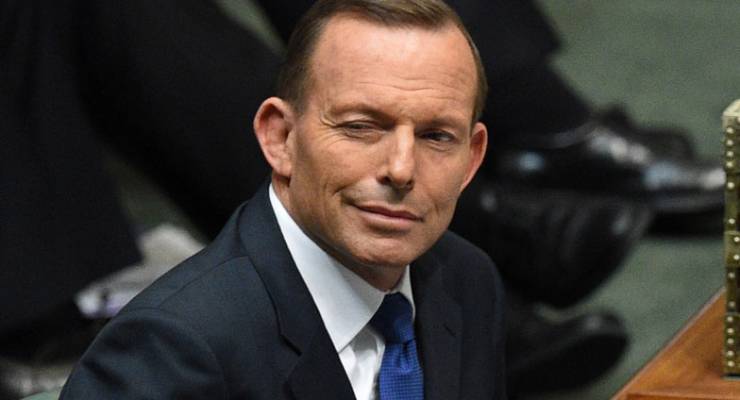
Off the back of three record-breaking years of greenhouse gas emissions and five years of nothing on energy policy, it’s difficult to remember that Australia once led the world on climate action.
Even more difficult to remember is that keeping the planet alive was once a moderately bipartisan goal: John Howard was forced by colleagues to bring an emissions trading scheme to the 2007 election, a policy both Brendan Nelson and Malcolm Turnbull would (in principle) support as opposition leaders.
Then came Tony Abbott, who, throughout his time as opposition leader, prime minister, and backbencher, helped kill each of the following:
- Kevin Rudd’s proposed 2009 Carbon Pollution Reduction Scheme
- Julia Gillard’s legislated 2012 carbon price and the emissions trading scheme it would have eventually turned into
- The Climate Commission (now the non-profit Climate Council) and 8000 gigawatts from the renewable energy target
- Chief Scientist Alan Finkel’s proposed 2016 Clean Energy Target, widely seen as the third-best emissions policy
- Malcolm Turnbull’s 2018 National Energy Guarantee, definitely the fourth best option and, with 2021-era energy targets aimed at 2030, one largely seen as both pointless and ultimately symbolic of the Coalition’s inability to agree on even superficial action
Now, with the landmark IPCC report giving the world roughly 10 years to get on track, Australia simply cannot afford a repeat of this decade. Here are the things we can realistically do:
Check rank denialism
The Coalition has roughly zero hope of acting on greenhouse gas emissions as long as energy policy is dictated by the Monash Forum. But, outside of the far-right’s total denialism, last week’s IPCC report also exposed many ostensibly moderate Coalition members as either ignorant or uncaring; so much so that former Liberal leader John Hewson has openly called for a protest vote on climate change at the Wentworth byelection.
Ahead of the federal election fear campaigns and counter-campaigns over energy prices, it will be important to remember that, as more renewables enter the grid, prices to 2030 are expected to drop no matter what under each of the following emissions reductions targets:
- business as usual (with average savings of 18.5%)
- 26% (savings of 20.8%)
- 45% (savings of 18.3%)
- 65% (savings of 15%)
Finally, according to a Lowy poll, 84% of Australians are actually happy with more government investment in renewables and grid infrastructure if it means not killing the planet. If my maths stacks up, a government selling “nothing” might be in trouble.
Action from Labor
The ALP, if it forms government, has a serious target of 50% renewable energy by 2030, and while it remains unclear if they’ll opt for an emissions trading scheme or float a meatier NEG, that’s still almost double that of the Coalition.
But there are always holes to be addressed, especially Labor’s inconsistent record on the Adani-Carmichael coal mine. Shorten also offered only a lukewarm response to the IPCC’s demand for a complete phase-out of fossil fuels by 2050 — a position that would not just affect Australia’s energy mix but our mining, processing and associated industries.
The role of fossil fuel-related jobs in Australia, while often inflated, is a legitimate concern and will require a genuine transition. Yet the ALP’s recent record on coal and gas mining nonetheless betrays climate action and, as we’ll see, there are plenty of replacement industries.
Embrace change
Part of what’s so frustrating about our federal policy vacuum is that almost every other facet of society has done amazing work in the transition to decarbonisation. The states and territories, outside of the Adani and gas mining support, are largely thriving. And on the industry end, global renewable capacity doubled the growth of fossil fuels last year.
In terms of newer industries, the increased need for lithium batteries will mean a resurgence for Australia’s mining jobs, British investor Sanjeev Gupta has signalled a renewable manufacturing revolution with steel-making and potential electric vehicles factories, and Finkel’s recent push for a hydrogen fuel-cell industry hints at a replacement for coal and gas exports.
Finally, the Australian Energy Market Operator’s 20-year roadmap for energy infrastructure, the inaugural Integrated System Plan, demonstrates how a decentralised, two-way grid will become essential as Australia heads towards a renewable grid and starts to exit coal-fired power stations (12 by 2030, if we follow the IPCC).
Basically, in any logical political system, the potential of a future built on not just wind farms and solar panels but hydrogen cells, storage, 24/7 renewable generation, and a new car manufacturing industry would make this — to paraphrase one supremely disappointing former leader — the most exciting time to be an Australian.








I hope the Coal-ition are heavily defeated at the next election.
What’s needed is more renewables. And more storage. There should be large-scale lithium batteries coming on line, as the amount of renewable increasingly exceeds demand at certain times of the day, in order to balance shortfalls at other times of the day (and as noted, mining and processing the lithium would be a useful for thermal coal mining, metallurgical coal mining will still be necessary).
50% of electricity coming from renewables is certainly doable. 100% is also possible.
Vanadium Flow Batteries, Wayne.
Replace metallurgical coal with graphite in steel making, and use Hydrogen as the reductant.
Whoa! Vanadium is about $100/oz, Lithium about $1/oz (world supply about 350yrs at current usage projections. Wikipedia).
Proton batteries using carbon at a fraction of the price of Lithium would be a better bet I think. Just saying…
Please don’t talk about keeping the “planet alive”. Earth has been around for 4 billion years and has another 4 billion or so to go before it dies. Climate change won’t bother the Earth at all.
However, climate change will result in great upheavals for us humans as well most other forms of life. It’s these upheavals that need to be clearly spelt out, not talk of the Earth needing to be saved.
Pumped storage construction should be started. Not just a lookseebullshirt study idea like Snowy 2.
Hydro turbines on places like the Kimberly river deltas with their massive tides. Both flood and ebb.
High voltage DC transmission lines to get the power where its needed.
Prospective immigrants to work on the construction like the Snowy Scheme. The libs are already proposing new migrants have to go bush for a couple of years, here’s their chance.
I am hoping proposed sea water pumped hydro systems get built in South Australia.
I believe a pumped hydro system is being built in a disused Queensland mine also.
That would be the old Kidston gold mine, which incorporates the Pumped Hydro storage with Solar and Wind generation.
Gravity, pumped and river flow hydro systems have been used all over Europe, some for many, many decades. Andorra is a tax free country because of its export of hydro energy to France and Spain. In almost every way it’s a mature technology. Yet you’ll find almost none in Australia. There used to be a hydro system outside Mullumbimby in Northern NSW. All efforts to get it up and running again have so far failed.
Gaw blimey – another article on climate change ! Wots coming in tomorrows article? Although hot air from Canberra is the norm -this has been overtaken by the journos who are so out of touch with the average family they think the average person cannot enjoy the intellectual TV shows like the Bachelor or Bachelorette because all the time deep down they are worried about climate change which will destroy their lounge room. So they have to decide who to phone -Beyond Blue, Black Dog , Lifeline , etc such a wide choice.
But it is exciting all these wonderful solutions -Hydrogen , graphite , lithium [also used for depression] are in the mix- Yes exciting future for development and many more – is like telling a hungry man wanting a steak , see that calf just born over there, wait till it grows then you can have a steak.
Present cost effective life supporting sources should be utilised to the max until something else evolves to maturity. Non -guilt ridden countries like China, India seem to cope with that approach – without requiring regiments of counsellors or journos writing about the same boring thing.
Those who are actively campaigning against renewable energy, are almost certainly in the pockets of the fossil fuel industry… follow the money trail.
I don’t think anyone is campaigning against renewable energy – I think they are saying make the new system work and get up to speed before we stop the existing supply.
Craig Kelly, Barnaby Joyce and Tony Abbott are all speaking out against renewables and in favour of coal.
Really, Desmond? Successive liberal govts have systematically destroyed our renewables industry. Concentrated solar thermal using molten salt for energy storage, an Australian initiative, had to go overseas and is now used in several countries. Our PV panel industries, gone. Our wind turbine industries, gone.